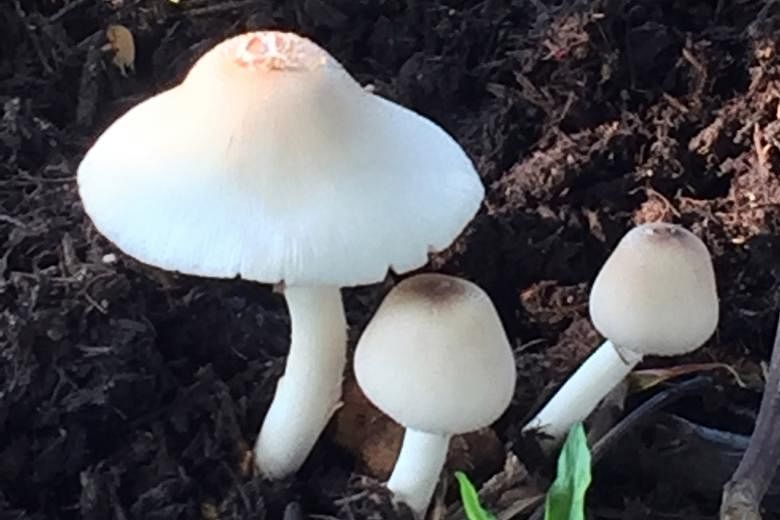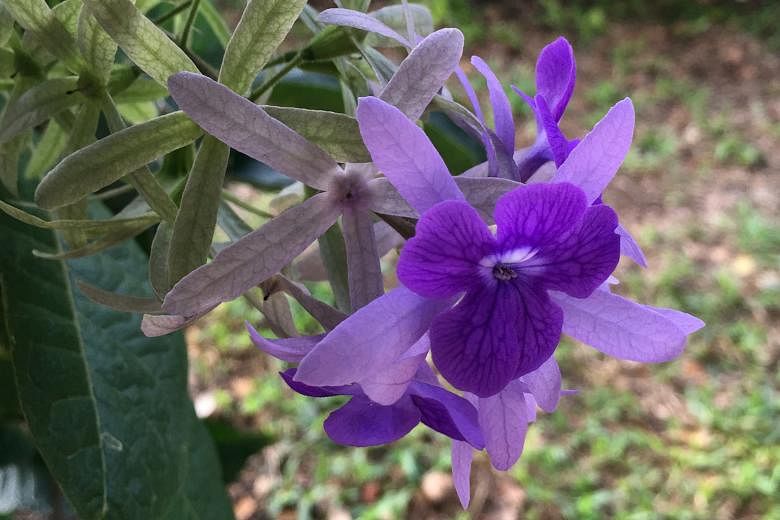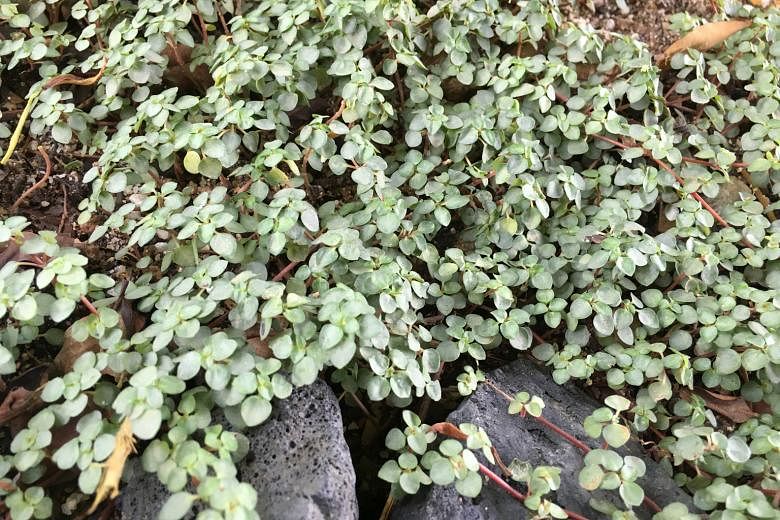Sandpaper Vine a woody climber
I spotted these purple flowers growing on a sheltered walkway at Stadium Boulevard in Kallang. Are they creepers? I have also seen mushrooms growing next to these flowers. Are they edible or poisonous?
Paige Loh
The plant with blue flowers is commonly called the Sandpaper Vine - named for its rough leaves. Its botanical name is Petrea volubilis. It is a woody climber and requires full sun and well-drained soil to thrive.
It is difficult to identify the mushrooms without an expert's help and further laboratory analysis.They can be poisonous.
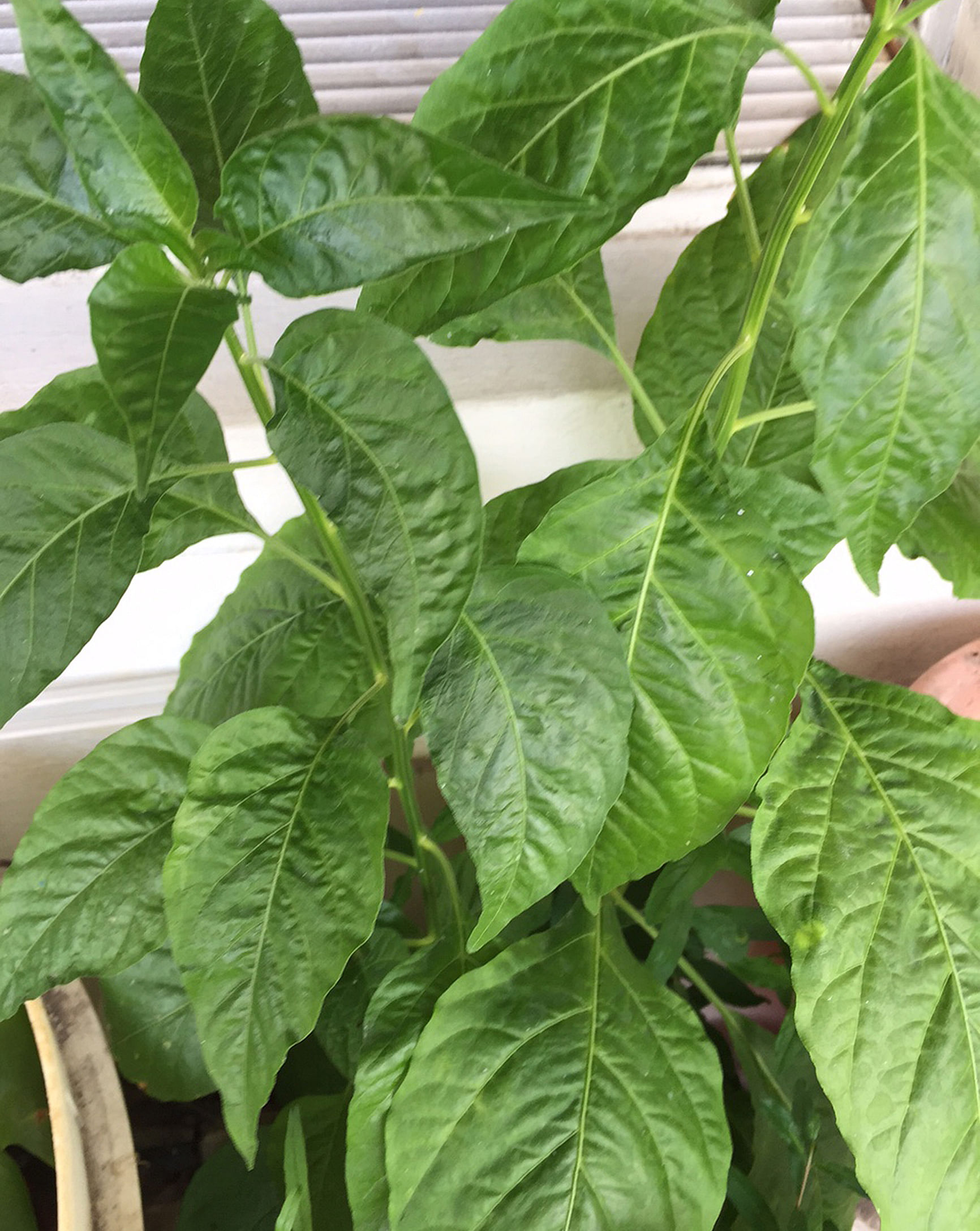
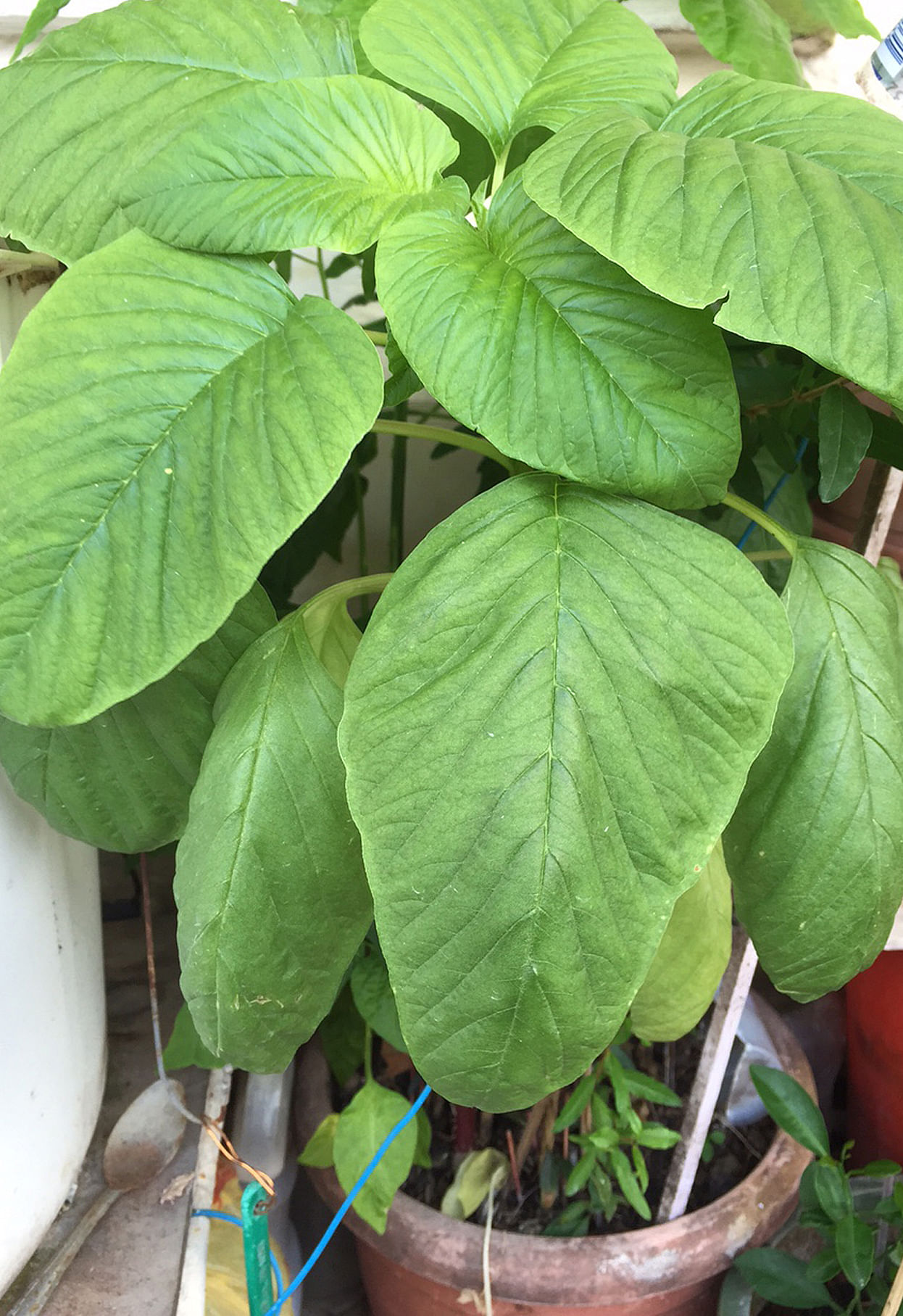
Plants could be chilli and Chinese Spinach
What are these plants?
Pang Kok Meng
The plant at the top is likely a type of chilli. The other is probably a type of Amaranth or commonly known as the Chinese Spinach (its botanical name is Amaranthus gangeticus). Its young leaves and shoots are harvested and eaten as a leafy vegetable.
Cornstalk Plant lacks sufficient sunlight
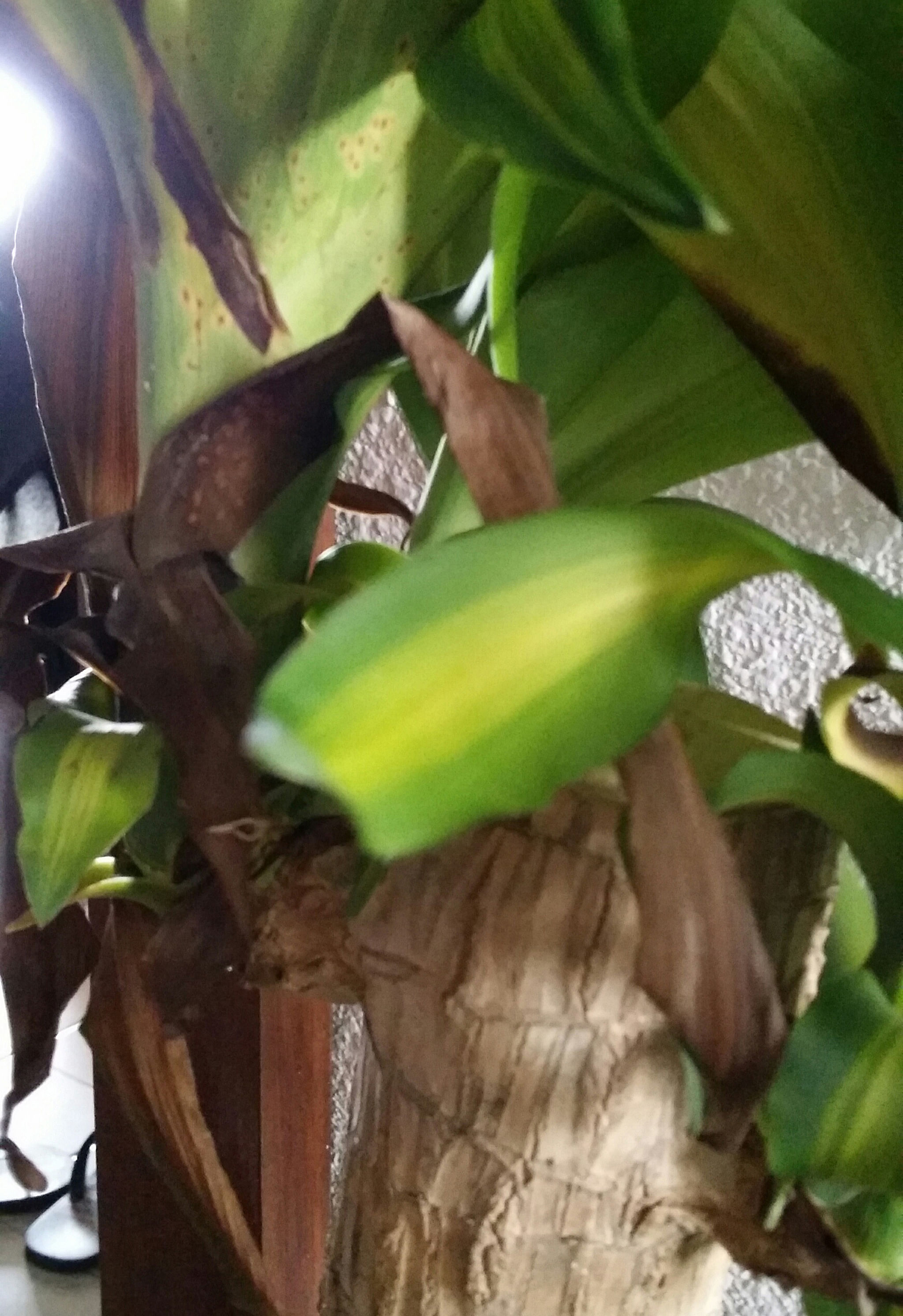
I bought this plant (pictured) about three months ago and placed it at the entrance of my house where there are strong winds and a lack of sunlight. But some branches blackened and started rotting. I water the plant once every two weeks. Is it diseased? What other plants can I place at the same spot?
Wan Siew Hoong
The plant is botanically called Dracaena fragrans "Massangeana". A common name is the Cornstalk Plant. Locally, it is known in Chinese as "Tie Shu"
The problem is likely caused by insufficient sunlight. As the plant weakens over time, it is susceptible to pests and diseases.
There is no indoor plant that can be grown in a dimly lit area over a long period.
If you want to have greenery for your entrance, get several plants and rotate them between the display area and a bright place where plants can recuperate.
A plant can be displayed in the dimly lit area for about two weeks, and then it must be exposed to better light conditions to recuperate.
Tip: Gray Artillery Plant offers attractive contrast to foliage plants
The Gray Artillery Plant, which has thin, trailing stems, is often sold as a small potted houseplant. It is also used to dress up dish gardens and terrariums. Botanically known as Pilea libanensis or Pilea glauca, it has small leaves with an attractive, silvery-blue sheen. It is rather shade-tolerant and can be used as a groundcover in a shaded corner of the garden.
It forms a dense silver carpet under the right light conditions and can be used to provide highlight and contrast to other foliage plants.
Semi-shaded spot needed for Stromanthe sanguinea "Triostar"
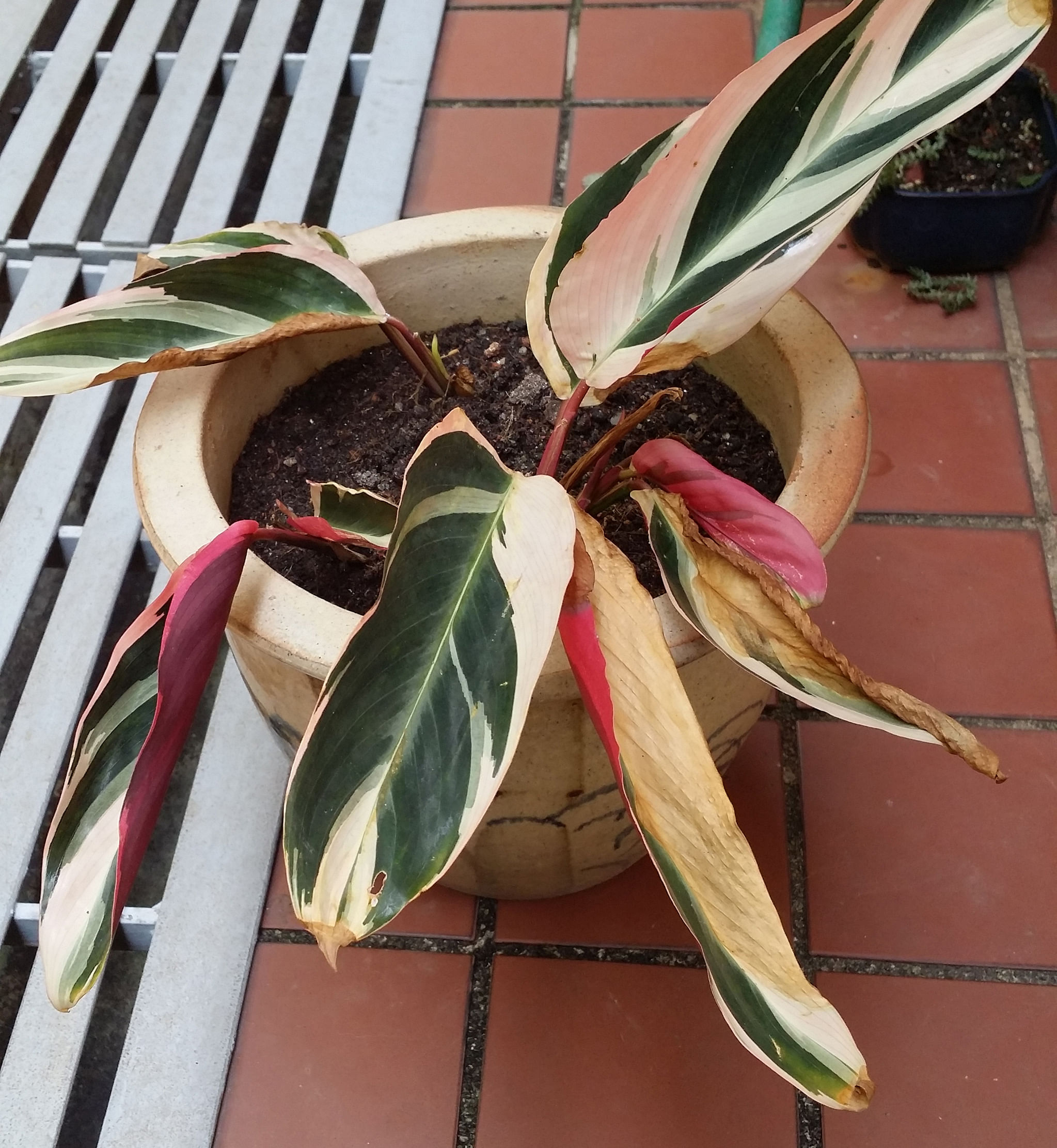
I tried to nurture this plant (pictured) twice, but without much success. It seems sensitive to how much filtered sunlight and water it gets. What should I do?
Jean Teo
This ornamental plant is known botanically as Stromanthe sanguinea "Triostar" and is grown for its attractive leaves.
It is a sensitive member of the Prayer Plant family - it needs a protected, humid and semi-shaded location to grow well. It thrives best outdoors in a shaded corner of the garden.
In high-rise apartments, the air can be dry and the plant may be exposed to winds that dry it out. Its soil should be kept moist but not wet; it must never be allowed to dry out totally.
•Answers by Dr Wilson Wong, a certified practising horticulturist and founder of Green Culture Singapore (www.greenculturesg.com). He is also an NParks-certified park manager.
•Have a gardening query? E-mail it with clear, high-resolution pictures of at least 1MB, if any, and your full name to stlife@sph.com.sg
